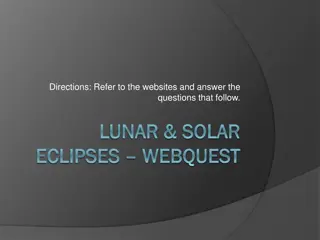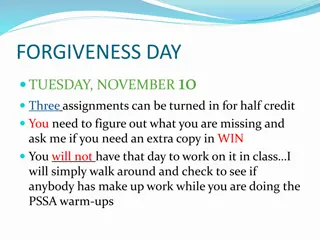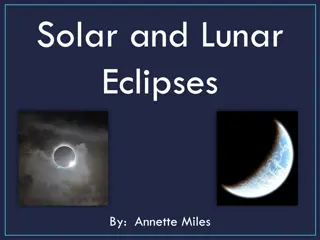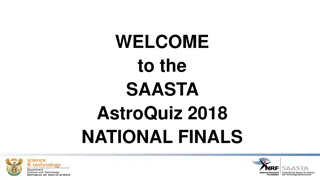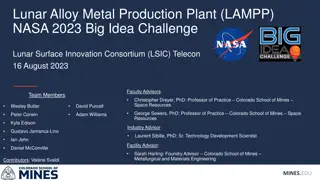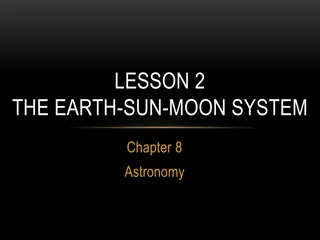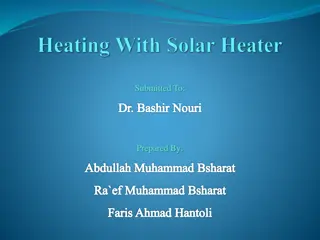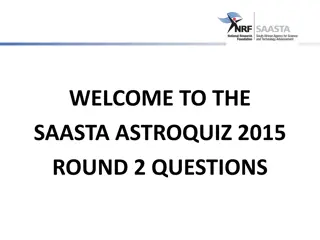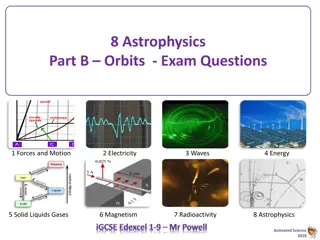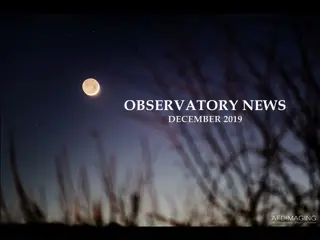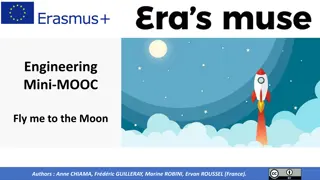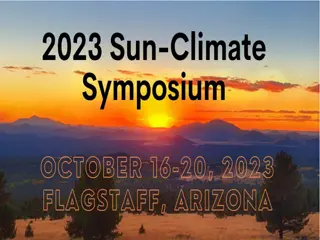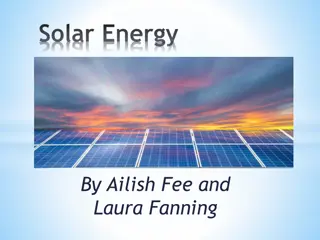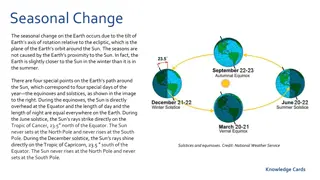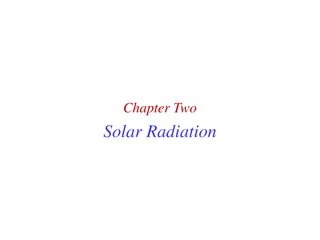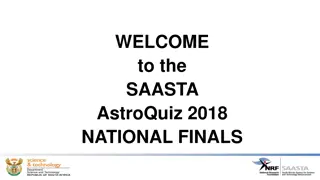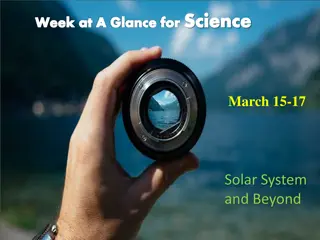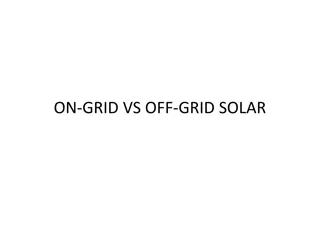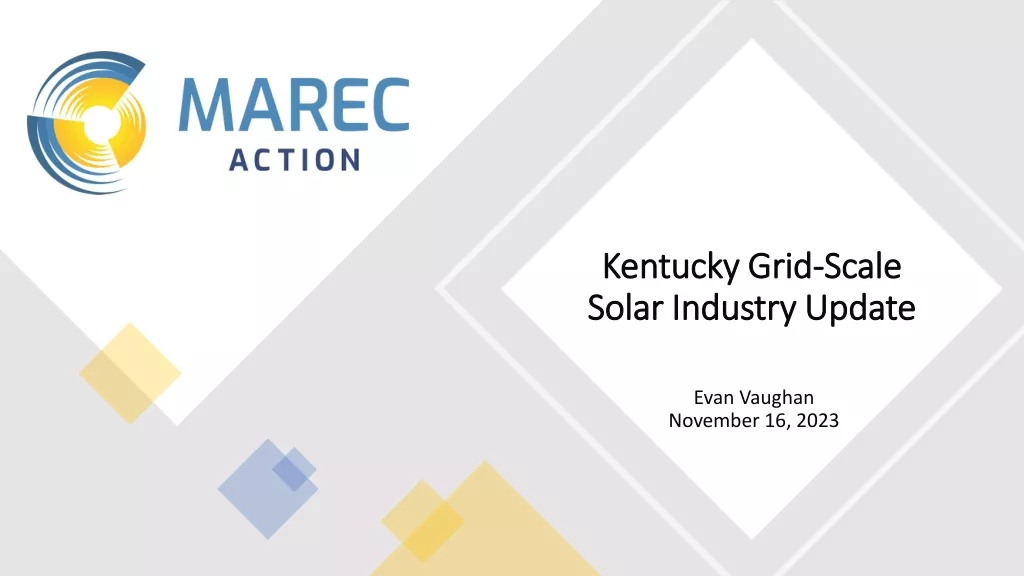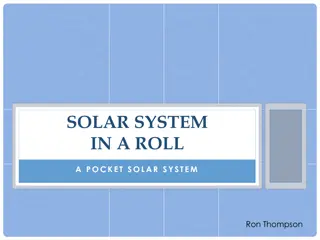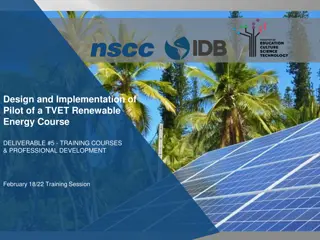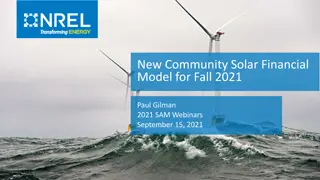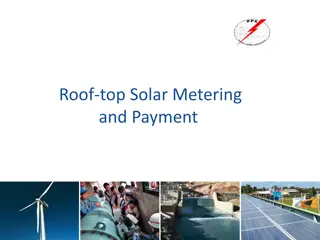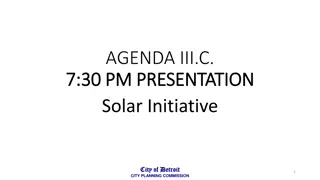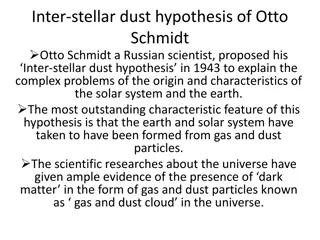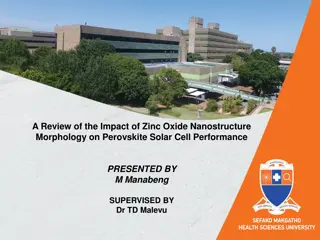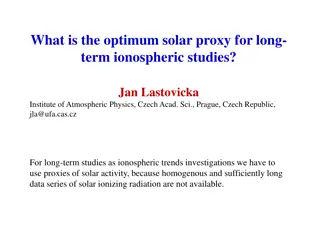Understanding Eclipses: Solar and Lunar Phenomena Explained
Explore the difference between solar and lunar eclipses, why they don't occur every month, and why only some parts of Earth witness solar eclipses. Discover how the Moon's orbit and shadows play a crucial role in these celestial events.
Download Presentation

Please find below an Image/Link to download the presentation.
The content on the website is provided AS IS for your information and personal use only. It may not be sold, licensed, or shared on other websites without obtaining consent from the author. Download presentation by click this link. If you encounter any issues during the download, it is possible that the publisher has removed the file from their server.
E N D
Presentation Transcript
Eclipses Questions to keep in mind. What is the difference between a solar and lunar eclipse? Why don t they happen every month? Why does only some of the Earth see a solar eclipse when it happens?
Eclipses Solar Eclipse: when the Moon casts a shadow on the Earth Lunar Eclipse: when the Earth casts a shadow on the Moon. In a solar eclipse the light coming from the Sun to the Earth is blocked by the Moon. In a lunar eclipse the light going from the Sun to the Moon is blocked by the Earth.
Lunar Phases Recap The Moon takes about 27 days to orbit the Earth. As it orbits, different parts of it are illuminated. A full moon occurs when the Moon is on the opposite side of the Earth to the Sun A new moon occurs when the Sun and the Moon are on the same side of the Earth.
Why not an eclipse every month? From the last diagram you might think that we should get both a solar and a lunar eclipse every month. However the Moon is tilted in its orbit around the Earth. This is shown in an exaggerated way in the image here. Note this is not to scale.
Solar Eclipse As the Earth and Moon travel around the Sun, sometimes the orbits lineup so that the Moon blocks some of the light coming from the Sun. Because the Moon is smaller than the Earth only part of the Earth will be in full shadow, this shadow is known as the Umbra. A larger part of the Earth will see the Moon blocking some of the Sun, this shadow is known as the Penumbra.
A solar eclipse from Space As we have a lot of satellites monitoring the Earth it allows us to get amazing images of eclipses from Space. Click the following link to view a timelapse of another eclipse from Space. The eclipse in the video is moving because the Earth is spinning and the satellite is orbiting the Earth at the same speed. https://youtu.be/yL1rnAGm8g0
Lunar Eclipse A lunar eclipse occurs when the Earth blocks light travelling from the Sun to the Moon. Similar to the Solar Eclipse there are two parts to the Earth s shadow, the Umbra and the penumbra. While a total solar eclipse is only visible to a small part of the Earth, anyone on the night time side of the Earth during a lunar eclipse will get to see it.


